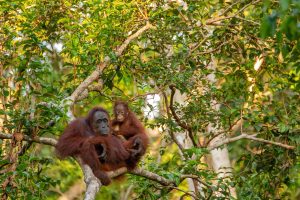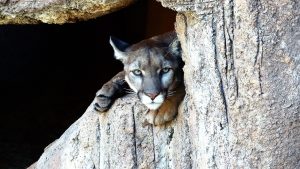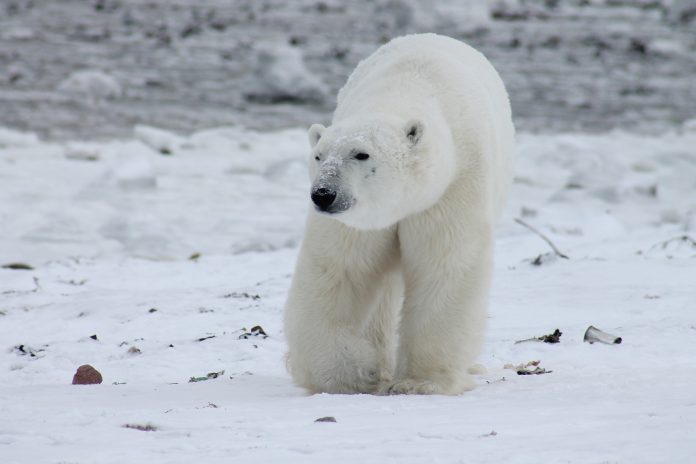When thinking of a safari it isn’t unusual to imagine a Kruger National Park-style search for the big five. As South Africans who are fond of the wild, these trips are a part of our souls, but they definitely aren’t the only safaris available. True nature lovers would be amazed at the variety of safari out there, and the adventurous will likely want to add at least one, and possibly more, of these trips to their bucket lists.
Tiger safari India
Indian wildlife invariably invokes one name: the tiger. While the vast country boasts remarkable biodiversity, ranging from the Himalayas to rainforests and the coastline, the Bengal tiger takes centre stage. Only a handful of nations can claim tiger territory, with India hosting the majority.
A multitude of national parks await exploration, yet Ranthambore in Rajasthan stands out as one of the finest. It offers excellent prospects for tiger sightings, a diverse landscape, and unrivalled photographic opportunities. Beyond the beloved Bengal tiger population, visitors can marvel at leopards, wild boars, hyenas, sloth bears, macaques, and more. In addition to the wildlife, the 1,334-square-kilometer national park boasts the splendid Ranthambore Fort, which lends its name to the park.
The awe-inspiring tiger ranks as the planet’s largest living cat species, with the most massive males stretching nearly 4 meters in length and weighing up to 300 kilograms. Encountering a tiger in Ranthambore is nearly a certainty as visitor numbers to Ranthambore are limited, ensuring the lakes, forests, and bushland remain relatively undisturbed tiger domains. Most Jeep safaris adhere to prescribed routes along the main paths, yet a couple of hotels have gained access to deeper regions of the park, rendering them premier accommodation options during your stay.
Orangutans Malaysian Borneo

On the southwestern coast of Malaysian Borneo, just beyond the bustling city of Kuching, two of nature’s most extraordinary primate species thrive. The 653-hectare Semenggoh Nature Reserve, nestled at the interface of city and jungle, serves as the habitat for Borneo’s beloved orangutans, a critically endangered species decimated by extensive poaching for bushmeat and the pet trade, as well as habitat loss through deforestation. Semenggoh Sanctuary plays a vital role, in sheltering orphaned and rescued young orangutans and imparting survival skills for their reintroduction into the wild, resulting in a flourishing wild population.
Though these orangutans have the freedom to roam the forest, which visitors can traverse to discover their distinctive nests, they’ve also learned to anticipate feeding times. Caretakers at the reserve provide daily rations for these charges, who swing through the treetops and descend to a platform laden with ripe fruits for their lunch. These wise-faced apes are easily distinguishable, with their lengthy arms and vibrant ginger fur setting them apart in the lush foliage. Lucky observers may spot orangutan mothers cradling their young, clinging precariously to their abundant russet fur.
Yet, orangutans are not the sole rare inhabitants of this region. Further south, as the jungle gives way to the sea, lies Bako National Park, a coastal reserve teeming with Bornean wildlife, including macaques, the Bornean bearded pig, flying lemurs, pangolins, tarsiers, slow lorises, and mouse deer. Among its unique residents stands out the proboscis monkey, arguably one of the most peculiar-looking creatures, with its extraordinarily gangly limbs, prominent potbelly, and a nose that dangles like ripe fruit. Ungainly and unconventional in appearance, these Old World monkeys while away their hours in the branches, feasting on leaves and fruits. Therefore, while trekking or taking safaris through the park’s stunning landscape, don’t forget to cast your gaze skyward to behold these captivating creatures.
Red panda trekking Nepal
Locating one of the world’s most elusive creatures is no small feat. Red pandas, renowned for their remarkable shyness, inhabit the foothills of Nepal, within a forested realm known as the Eastern Himalayan broadleaf forests. These forests stretch from Nepal to China, but the discerning red panda displays a preference for specific terrain—slopes adorned with fir trees and, of course, bamboo.
Despite its name suggesting a connection, red pandas share no close kinship with their giant counterparts. Surprisingly, the name, believed to originate from the Nepali word for “paw,” was actually bestowed upon the red panda first. Initially referred to as simply “pandas,” the prefix “red” or “lesser” was added after giant pandas gained recognition in English-speaking nations decades later.
The undeniable charm of these creatures is unmistakable, with their oversized paws, tufted ears, and playful demeanor, endearing them to zoos worldwide. In the wild, however, they are primarily solitary, except during the breeding season. Their coats may make them conspicuous within captive enclosures—where the majority of research on them has been conducted—yet, in the forest, these coats provide camouflage. Proficient climbers, red pandas spend much of their time in fir trees, where the reddish bark and white lichen offer protection from predators, typically leopards, as well as from human observers.
This elusiveness renders spotting a red panda exceedingly challenging, prompting the organization of foot safaris led by experts acquainted with the best routes to trace their tracks. Opt for a sustainable tour, involving local guides, dedicated to the protection of red pandas and the spotlighting of their habitat loss and conservation efforts. Along the way, pause at local tea houses and glimpse the forest’s avian inhabitants, encompassing 500 species of birds.
Puma tracking Chile

While jaguars steal the spotlight in Central and Northern South America, in the serene blue expanses of Patagonia, pumas reign supreme. Chile’s Torres del Paine National Park harbours these enigmatic felines, one of the most elusive among large cats, in abundance.
On puma safaris, a team of tracking experts, intimately familiar with the terrain and its inhabitants, labour diligently behind the scenes, armed with radios to pinpoint and announce sightings.
Also known as cougars and mountain lions, pumas are solitary and elusive cats, sporting tawny pelts, and favoring mountainous landscapes—of which Torres Del Paine offers aplenty. While spotting wild pumas on safaris undoubtedly ranks as a Patagonian highlight, the park itself is extraordinary. Its treks form a ‘W,’ encompassing the sprawling Grey Glacier in the west, the Vallée del Francés with its glacier and vistas overlooking the opaque turquoise waters of Lago Nordenskjöld in the centre, and Tres Torres to the west—nearly 3 kilometres high granite spires that pierce the pale Patagonian heavens.
The ultimate trek here entails ascending the towers under the shroud of night, all the while remaining vigilant for pumas lurking within the adjacent forests. Upon reaching the journey’s conclusion, witness the sunrise illuminate the towers, casting its glow upon the lake nestled at their feet.
While pumas are most active during twilight and nocturnal hours, daylight hours offer an abundance of wildlife as well. Torres del Paine hosts llama-like guanacos, foxes, deer—including the endangered Chilean huemul, and offers bird enthusiasts ample subjects, including hawks, harriers, horned owls, and the majestic Andean condor. With a dash of luck, one might also encounter flamingos and the fluffy-feathered rhea. As night descends and the puma hunt commences, do not forget to direct your gaze skyward, for Chile boasts some of the finest stargazing opportunities on Earth.
Polar bear watching Arctic Canada
Traversing Canada’s stark white expanse, their thick fur rustling with each step, the world’s largest land carnivore is a year-round resident of Churchill’s tundra. However, it is during autumn and winter that polar bears congregate in considerable numbers as they await the reformation of ice for hunting. Amongst the most perilous and endangered creatures on Earth, the largest recorded polar bear tipped the scales at over 1,000kg. Nevertheless, their fluffy cream coats serve as effective camouflage in the Arctic terrain, rendering them elusive from a distance. Fortunately, safaris in Churchill offer an opportunity for close encounters, with specialized vehicles venturing into their natural habitat. Curious bears may even approach these vehicles, raising their paws for a closer look at the occupants, their warm breath condensing on the frosty glass just centimetres from one’s face.
Situated on the shores of Hudson Bay, Churchill stands as one of the few human settlements from which polar bears can be observed, boasting a thriving population that enhances the prospects of sightings while out on safaris. Lodges provide a chance to coexist with these bears in their realm, affording guests the opportunity to observe them from the warmth of their accommodations as the bears amble across frozen lakes in search of their next meal.
Alongside these magnificent creatures, one may also catch glimpses of the endearing but regrettably delectable seal, as well as snowy owls, Arctic foxes, gyrfalcons, and ptarmigans. As the natural spectacle yields to the night, another mesmerizing performance begins in the form of the Northern Lights, which frequently dance across the vast starlit canopy.
Despite their numbers, Churchill’s polar bear population teeters on the brink of extinction due to diminishing ice and habitat loss. This precarious situation lends even greater significance, satisfaction, and excitement to witnessing these majestic animals in the wild.


